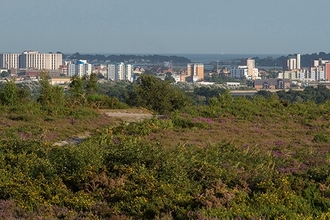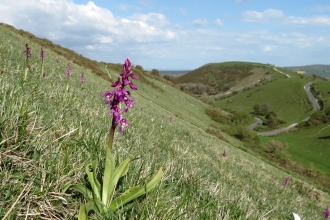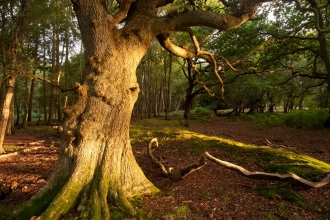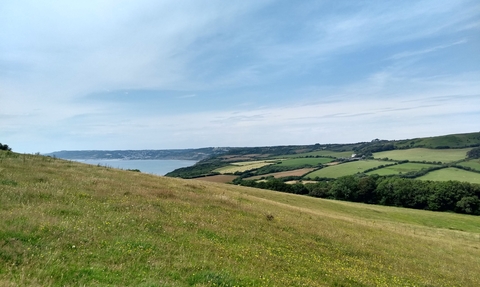
Sites of Nature Conservation Interest
What are Sites of Nature Conservation Interest?
Sites of Nature Conservation Interest (SNCIs) are sites in Dorset that are considered to be of at least county level importance for nature, due to the rich variety of wildlife they support. SNCI status is a local recognition which supplements the national network of statutory designated sites such as Sites of Special Scientific Interest (SSSIs) and Special Areas of Conservation (SACs). There are currently around 1300 sites recognised as SNCIs, comprising over 4% of Dorset's land area.
These areas of land often support rare or threatened habitats and species and contribute to the wider mosaic of sites which underpin Dorset’s natural heritage. They form a core part of Dorset’s Ecological Networks and include grasslands, wetlands, woodlands, heathlands and road verges. Many of our nature reserves and reserves managed by Local Authorities are SNCIs, but the majority of SNCIs are privately owned and managed as part of the farmed landscape. In other areas of the country, they are sometimes referred to as Local or County Wildlife Sites.
What is the purpose of SNCI recognition?
Dorset Wildlife Trust collects information and monitors the condition of wildlife rich sites in Dorset through a rolling programme of surveys.
This provides evidence of the importance of these sites for biodiversity and can be used to inform land-use and planning decisions including Local Plans and Local Nature Recovery Strategies. Knowing where important species and habitats are located is essential for enabling prioritisation of actions to drive natures recovery.
Monitoring also provides information for landowners and land managers about the important features of their land and provides a baseline for measuring changes and assessing how best to manage their natural assets.
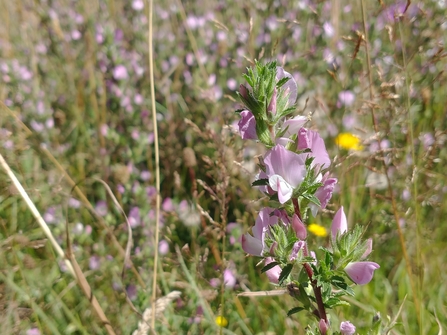
Mariko Whyte / spiny restharrow
The role of SNCIs in Nature Recovery
Locally important sites such as these play a core role in the development of Nature Recovery Strategies to create well connected, nature-rich spaces of all sizes, across all areas.
Mapping of Nature Recovery Networks needs to identify where healthy wildlife habitat is found and where it can be created, protected, restored, and joined together to achieve recovery. This information can then be used to plan where to take action for nature, to inform local planning decisions and to target investment of agricultural funding, contributions from development and from industry to deliver the greatest benefits for nature.
Knowledge of our existing landscape is also key to deciding where best to deliver nature-based solutions, for supporting climate change mitigation and adaption and for helping tackle health inequalities.
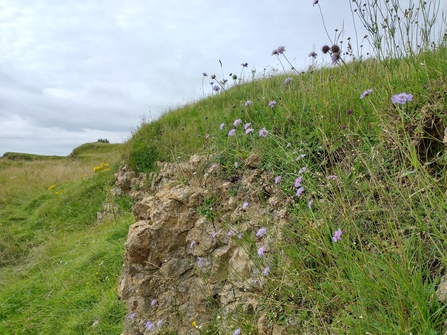
Mariko Whyte / unimproved limestone grassland
How are sites selected?
-
Each site is considered on the basis of existing data or by a new field survey. Surveys are only undertaken with permission of the landowner.
-
Surveys are reviewed by a selection panel which includes representatives of Dorset Wildlife Trust, Dorset Environmental Records Centre, Dorset County Council, Natural England, the National Trust and Dorset AONB.
-
The panel examines the data against an agreed set of guidelines related to wildlife habitats and species in the county which have been developed and reviewed by local experts. More information about the criteria for selection of SNCIs can be found in the SNCI manual on the DERC website.
-
Survey results are sent to landowners along with relevant management recommendations.
If you own or know of a site which you believe might qualify for SNCI recognition, please let us know at enquiries@dorsetwildlifetrust.org.uk
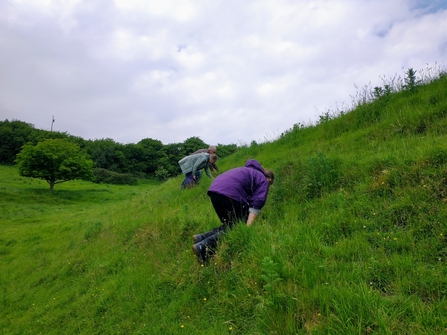
Mariko Whyte / volunteers undertaking a botanical survey
Where can I find information about SNCIs?
Because the majority of SNCIs are on private land, to protect the privacy of landowners, information about SNCIs is not openly available to the public.
Site details are held by Dorset Wildlife Trust and Dorset Environmental Records Centre (DERC) and mapping and summary information is made available to Local Authorities to inform strategic planning and land-use decisions. DERC manages the database of biological and geological information in Dorset and provides information on the distribution of habitats and species throughout the county.
Information about the species recorded and their location is available for specific projects and to inform planning applications and can be requested from DERC.
Existing SNCI landowners can get in touch with Dorset Wildlife Trust to request information about their site by emailing enquiries@dorsetwildlifetrust.org.uk
Landownership information is held only by Dorset Wildlife Trust for the purpose of communication relating to SNCIs and is never shared without specific permission.
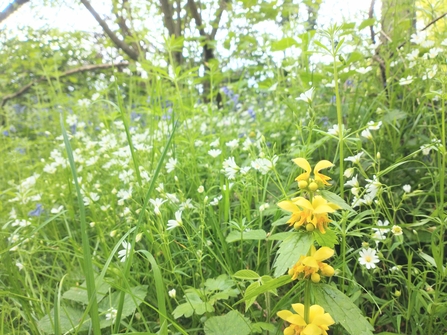
Mariko Whyte / rich ground flora in a coppice woodland
What does SNCI status mean for landowners?
Farmers and landowners hold the key to ensuring that the remaining pockets of wildlife-rich land continue to be well managed. It is thanks to long-standing management by landowners that such sites still exist and continued sympathetic management will mean that these sites are enhanced and retained with their wealth of wildlife for future generations.
Dorset Wildlife Trust is able to help SNCI owners and managers with advice and support for site management and access to funding opportunities where available. We work closely with other organisations concerned with countryside and wildlife and can may be able to assist with links into larger projects and other support or additional resources where needed.
If you own an SNCI, this does not mean that people will be allowed on to your land without permission. Rights of way will remain unaffected, and no new rights of access are created as a result of land being an SNCI.
The status does not impose any requirement to manage the site in any way you do not wish to. The recognition aims to focus and enhance voluntary efforts. We hope that landowners and managers will take pride in the status and be keen to preserve and enhance their sites.
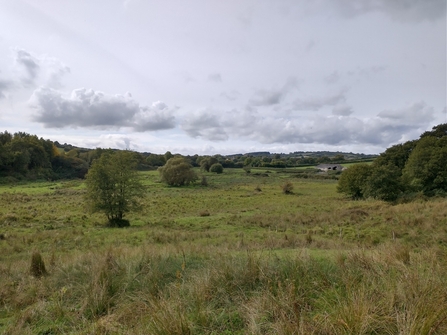
Mariko Whyte / fen meadow and rush pasture habitat managed by cattle
Landowner resources
Past issues of our annual newsletter for SNCI landowners, ‘The Green Linnet’, can be downloaded here. They include a range of articles about wildlife habitat and species, case studies and restoration projects, management techniques and other items of interest.
Please note some information in past issues such as opportunities for grant funding and contact details are likely to be out of date but we hope that many of the articles remain of interest.
The Green Linnet Issue 26: December 2023
The Green Linnet Issue 25: November 2022
The Green Linnet Issue 24: November 2021
The Green Linnet Issue 23: January 2019
The Green Linnet Issue 22: January 2018
The Green Linnet Issue 21: December 2016
The Green Linnet Issue 20: December 2015
The Green Linnet Issue 19: December 2014
The Green Linnet Issue 18: December 2013
The Green Linnet Issue 17: December 2012
The Green Linnet Issue 16: December 2011
The Green Linnet Issue 15: November 2010
Sites of Nature Conservation Interest Leaflet
If you would like more information on SNCIs in Dorset, then download our online SNCI leaflet here.
Update your contact details
If you are an existing landowner and need to update your contact details or have recently taken on land which includes an SNCI and need to let us know about this change you can do so using the link below. If you have any problems, please feel free to contact us via our details here.
Update landowner contact details
The SNCI project is financially supported by Dorset Council and has the support of both local authorities, Natural England and other conservation organisations. It is linked to the Dorset Biodiversity Partnership.

The SNCI project relies on volunteers to assist with desk-based administration of the project data and also volunteers with botanical expertise to assist with undertaking independent monitoring surveys. If you are interested in these opportunities get in touch and specify the SNCI project within the additional information.




